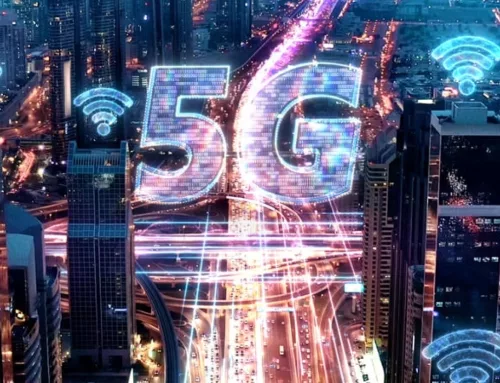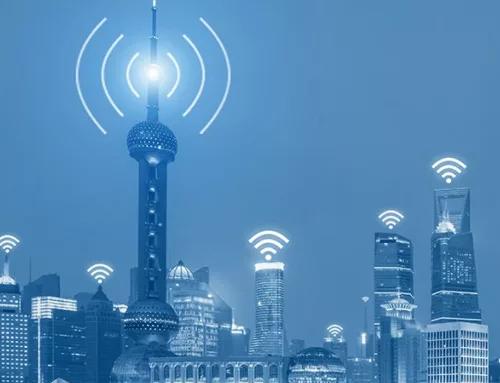Organizations view advanced wireless technologies as enablers for innovative technologies – IoT, AI and cloud – that promise to transform their enterprise. In today’s remote and hybrid work environments, data-hungry applications and services are a de facto norm, and communication technologies are under constant pressure to evolve and support higher bandwidths and lower latency demands.
In recent times, Wi-Fi is expected to meet and surpass user expectations. The journey from 2 Mbps to 10 Gbps, transitioning from the foundational Wi-Fi 0 (802.11) to Wi-Fi 6 (802.11ax), marks a remarkable tenfold enhancement in throughput. Clearly, Wi-Fi 6 shows potential to keep up with market expectations.
With the advent of 5G, the public wireless ecosystem too is under a large-scale change, offering enhanced speed, capacity, latency, connectivity, and scalability. To maximize the value of wireless connectivity, organizations should leverage both technologies to support different solutions, applications and use cases. This blog breaks down things by explaining:
- The coexistence of 5G and Wi-Fi 6
- Wi-Fi 6 role in supporting 5G
- Potential use cases
Does 5G mean the end for Wi-Fi?
The short answer to that is no.
While 5G networks offer wide-area coverage, low latency, and support for mission-critical applications, Wi-Fi remains essential for indoor and localized wireless connectivity. The aim is to use both technologies to provide seamless connectivity during mobility.
People can access 5G for outdoor and off-campus communications and Wi-Fi 6 for indoor and on-campus usage. Wi-Fi has been a widely adopted technology option and is a part of more ecosystems than 5G. Benefits for Wi-Fi 6 include:
- Cost-effective option: Wi-Fi 6 modems are less expensive to deploy and maintain than private 5G networks. Enterprises can leverage existing Wi-Fi infrastructure to provide wireless connectivity without additional costs.
- Device compatibility: Wi-Fi 6 supports a variety of devices, from smartphones and laptops to IoT devices. It supports multiple use cases, including internet access, VoIP calling, video conferencing, and IoT applications.
- User friendly: Wi-Fi is a familiar and competent technology that requires minimal configuration for most consumer devices. Operating systems and hardware supplied by major vendors are often compatible with Wi-Fi 6 technology.
- Secondary connectivity: Wi-Fi 6 enables efficient performance in dense locations for IoT devices (e.g., IoT inventory tracking system) that do not demand ultra-low latency.
| Parameters | 5G | Wi-Fi 6 |
|---|---|---|
| Technology | Cellular | WLAN |
| Architecture | Complex | Simple |
| Spectrum | Licensed spectrum | Unlicensed spectrum |
| Coverage | 1000 square feet to dozens of kms; designed to cover large areas and transmits at high power | Immediate vicinity; transmits at low power |
| Capacity | It can connect many devices | It can serve fixed number of services due to limited spectrum |
| Security and authentication | SIM card supported; Authentication using subscription permanent identifiers and subscription concealed identifiers. | No SIM card required; WPA3 security requires a service set identifier (or network name) and password |
| Cost-Efficiency | High price of spectrum license | Cost effective as it operates on unlicensed spectrum |
| Infrastructure Costs | Infrastructure for private 5G networks include base stations, small cells, and network equipment | Wi-Fi 6E set up involves upgrading existing infrastructure, including access points (APs) and routers |
| Use Cases | Suitable for mission-critical applications with zero downtime; real time application the demand high QoS | Suitable for applications that improve system productivity and simplify operations |
Wi-Fi 6: 5G network’s wingman
As mobile operators continue to deploy 5G wireless communication technology, Wi-Fi 6 will play a supporting part in realizing advanced wireless use cases. Unlike its predecessors, Wi-Fi 6 or 6E, an advanced version of Wi-Fi 6 that extends to the 6 GHz band, is designed to complement 5G.
The dependable infrastructure, affordability, and availability of devices compared to 5G equipment make Wi-Fi 6 a crucial partner of 5G in driving digital transformation initiatives such as IoT and workflow automation to manage productivity and improve efficiency.
Besides leveraging it for strategic priorities, communication service providers (CSPs) can explore this wireless technology for tactical solutions. CSPs can utilize Wi-Fi 6 for private 5G offloading – moving non-critical or less data-intensive tasks to Wi-Fi networks.
This activity frees up private 5G networks for critical applications that require low latency and high reliability. To realize the value of analytics, after deploying private 5G networks, enterprises can migrate data to Wi-Fi 6 networks for ensuring the speeds match for offloading the private 5G.
With the growing popularity of remote work and the use of cloud-based applications, Wi-Fi 6 can withstand high-bandwidth usage across a multitude of different devices. Channels in the 2.4 GHz and 5 GHz ranges are getting increasingly crowded, creating traffic jams and cost enterprises.
Enablers of Wi-Fi 6/6E
- Faster Speeds
Wi-Fi 6 offers 9.6Gbps throughput across multiple channels. It can achieve high data rates through efficient data encoding and intelligent use of wireless spectrum than traditional Wi-Fi standards. Increased bandwidth leverages more network traffic.
- Overlapping Basic Service Sets (OBSS)
It can solve network congestion. OBSS allows the devices operating on the same frequency to distinguish between packets from their BSS and the packets from overlapping to identify the network, it enables the access point to use a ‘colour’. Any traffic detected on the same channel but isn’t the same colour, enables devices in the local network to pass over and continue transmission, increasing accuracy and improving latency.
- OFDMA (Orthogonal Frequency Division Multiple Access)
While traditional devices must wait for the client to transmit or receive data in a congested network, OFDMA splits the channels into multiple carriers, allowing simultaneous transmission to multiple endpoints. This allows a Wi-Fi 6 router to send different signals in the same transmission window without communicating with multiple devices.
- TWT (Target Wake Time); Eight spatial streams for the 5 GHz band; WPA3 Security
TWT allows Wi-Fi 6 devices to negotiate when and how often they will wake up to send or receive data, conserving battery life. Wi-Fi 6 can double the spatial streams up to 8, boosting the overall capacity. WPA3 provides better Wi-Fi security using the latest security protocols. Wi-Fi 6 uses WPA3 certification, which enables strong 256-bit AES encryption.
Private 5G as a backhaul compliments Wi-Fi network deployment
Wi-Fi can be positioned ‘on top’ of a private 5G network to ensure both networks are available on a single site. Wi-Fi and private 5G can be used for advanced interworking, leveraging capabilities of the 5G backhaul to improve functionality, connectivity, and reliability of the Wi-Fi network.
Integrating 5G and Wi-Fi routers with SIM card slots allows routers to connect to cellular networks, reducing the risk of outages. The effective combination also allows more efficient use of network resources and provides better traffic management and additional redundancy.
In the event one network faces an issue or becomes unavailable, the router can switch to the other, ensuring that users stay connected. This can be essential for critical applications and businesses that require uninterrupted connectivity.
The ubiquity and familiarity of Wi-Fi with the speed and mobility of 5G potentially transform user access and experience of high-speed internet in various settings.
Potential use cases of 5G and Wi-Fi 6
Based on a survey conducted by Statista [1], it was found that 5G technology is preferred for outdoor usage, while Wi-Fi 6 is preferred for indoor and fixed-use cases. Both technologies offer higher speed, lower latency, increased device density and network capacity. However, the choice between 5G and Wi-Fi 6 depends on the specific use case.
Manufacturing
Automated Guided Vehicles (AGVs) help manufacturing, logistics and warehousing companies to simplify the material handling process. AGVs have been around for a while and are designed to operate over Wi-Fi, but they have needed help to keep up with changing business needs.
Industry-IOT sensors and 5G wireless networking ensure real-time fleet status to measure performance and Simultaneous Localization and Mapping (SLAM) navigation to prevent collisions.
Meanwhile, Wi-Fi supports AGV diagnostics and less critical sensors, ensuring seamless IIoT connectivity.
Healthcare
The implementation of 5G and Wi-Fi 6 varies for different participants – healthcare providers, payers, medical devices and pharma companies. For instance, a hospital in an urban area can use a 5G-enabled robot to perform remote surgeries to treat patients in places that lack healthcare facilities.
While 5G wireless connectivity with ultra-low latency helps perform surgery, Wi-Fi 6 can help providers by providing a reliable and efficient connection for post-op patient care and clinical workflows.
Wi-Fi-enabled devices can be used to communicate patient records, high resolution imaging results and real-time patient monitoring to medical staff.
Supply chain management
As the number of sensors (cameras, temperature sensors, hand-held devices, etc.) implemented in the supply chain operation increases, the more data needs to move. Additionally, the number of interconnected devices makes the network complex. When the network is supported by 5G it allows for faster transfer speed.
5G also facilitates augmented reality (AR) so supply-chain staff can use AR devices to scan their work environment and obtain cues and directions for locating items.
Meanwhile, Wi-Fi 6E supports surveillance cameras for monitoring cargo storage areas, security zones and inventory management.
Any data-intensive scenario that involves the movement of people within a pre-determined environment makes both these technologies suitable for robust and flexible wireless services. With that in mind, TCTS builds, plans, and designs (HLD & LLD) mobile private network and Wi-Fi deployment models, resulting in greater efficiency and cost optimization.
In Summary
For organizations evaluating 5G and Wi-Fi 6, it’s not a case of one or the other. To achieve the sought-after benefits of next-generation wireless technologies – speed, reliability, cost optimization, resilience and security of networks – organizations should focus on a blend of both technologies.
Delivering on the promise of 5G and Wi-Fi 6 technologies involves a complex ecosystem of players, including OEMs and infrastructure providers. When TCTS implements wireless connectivity solutions, we bring together capabilities and technologies based on the organization’s usage scenario.
Maximizing efficiency is crucial for businesses due to the limited resources and hence, it is important to foster the coexistence and collaboration of various wireless access technologies.
Key takeaways
- 5G and Wi-Fi 6 open opportunities for developing business applications never seen before to support different use cases.
- Private 5G and Wi-Fi 6 complement each other to support dense IoT environments but are different in many respects.
- Using 5G and Wi-Fi 6 together can provide seamless performance and coverage across offices, campuses, cities, and hybrid work scenarios.
References

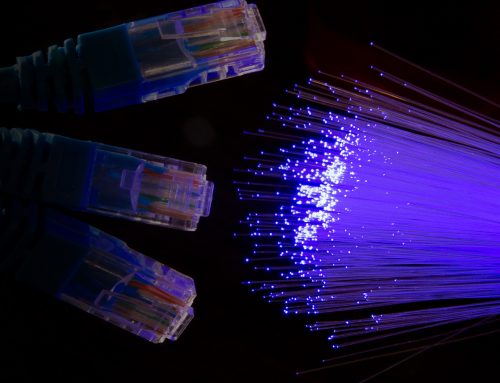


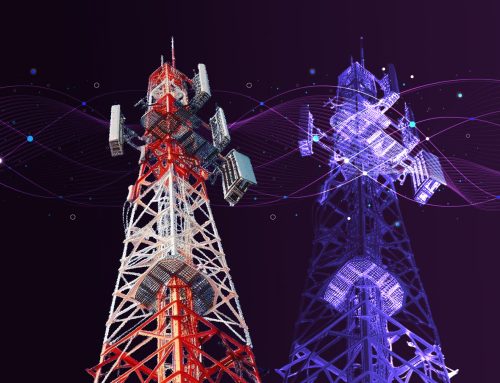

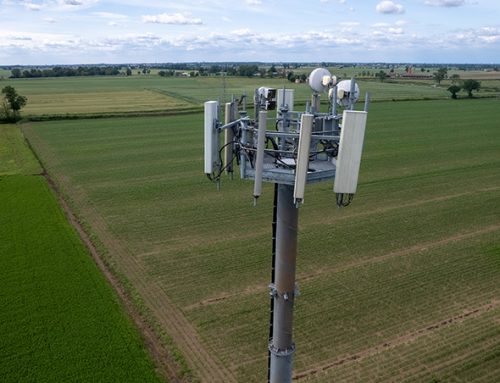



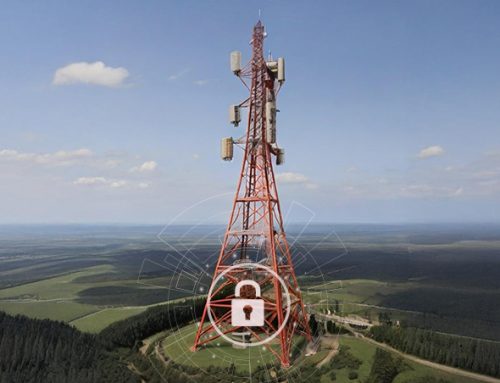











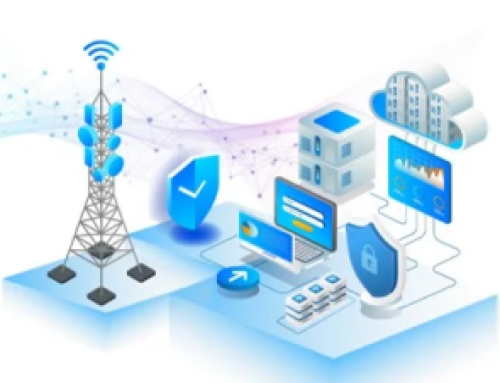


![Telco Cloud: A Key Enabler to Telco Transformation [Part 1]](https://www.tatacommunications-ts.com/wp-content/uploads/2023/06/Telco-Cloud-blog_image-1-500x383.png)


